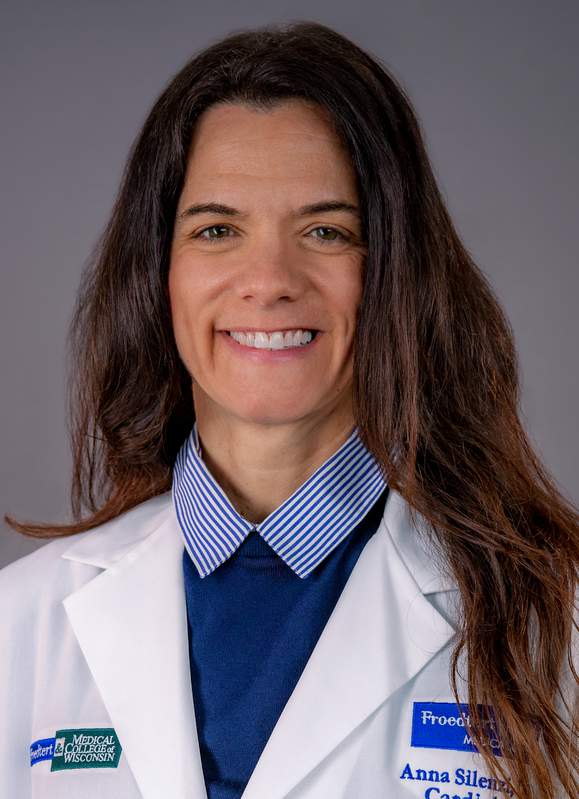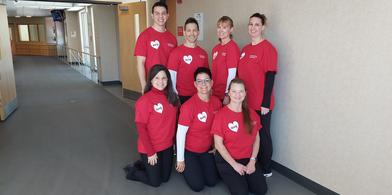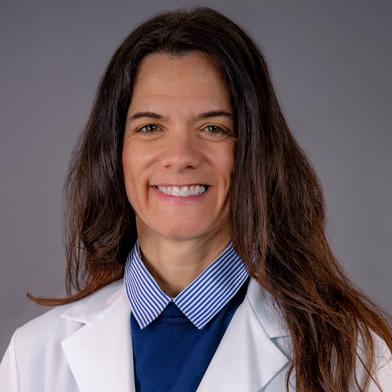Just about a year ago, one of the Certified Nursing Assistants on our staff at Froedtert Pleasant Prairie Hospital suffered a heart attack while she was at work. She recognized her symptoms, but was reluctant to admit to herself that she might be having a heart attack. Fortunately, her co-workers could tell that she was in trouble and rushed her to our emergency department, and then to our catheterization lab where Dr. Anna Silenzi, an interventional cardiologist, inserted a stent into the blocked coronary artery that was causing her heart attack. Today, our colleague is fully recovered and back to work.
That co-worker is just one of the more than sixty million women in the United States – half of all women in this country – who are living with heart disease.
“Heart disease is the leading cause of death among women,” according to Dr. Silenzi, “and one of the most preventable.”
“In 2020 alone, heart disease claimed the lives of more than 300,000 women – representing one in five of all female deaths,” Dr. Silenzi says. “That’s more than all cancer deaths combined. Sadly, nearly half of women in the United States are unaware of this frightening fact.”
Three main types of heart disease
Coronary artery disease is the number one killer of American women. It’s caused when plaque deposits build up on artery walls and reduce the blood supply to a woman’s heart and the rest of her body. Hormonal changes after menopause can increase the risk of developing coronary artery disease for some women.
Arrhythmia is characterized by heartbeats that are irregular, too fast, or too slow. Atrial fibrillation – more commonly known as a-fib – is one type of arrhythmias that many women can experience.
Heart failure is a condition in which a woman’s heart has weakened to the point that it can no longer pump enough blood to sustain other parts of her body.
“All three of these types of heart disease are serious conditions,” Dr. Silenzi says, “but the good news is that by knowing their symptoms, their risk factors, and how to prevent heart disease, more women can lead longer and healthier lives.”

DR. ANNA SILENZI
Knowing your heart symptoms
Here’s something very important for everyone to know about heart disease: women are more likely than men to have no symptoms. And while chest pain is still the most common symptom of a heart attack – regardless of gender – women are more likely to experience other symptoms.
These may include pain in their left breast, upper back, neck, throat, jaw, teeth, one or both arms, shoulder, or one or both legs. They may experience sudden and unusual fatigue, shortness of breath, feeling dizzy or lightheaded, feeling unusually hot, indigestion or nausea, numbness in their hands or fingers, rapid heartbeats, headache, new problems with vision, coughing or choking.
“I encourage women who experience these symptoms – especially women who have more than one symptom at the same time, without a known cause – to call 911 right away,” Dr. Silenzi says. “The longer a woman waits, the more they put themselves at risk of greater damage to their heart.”
Arrhythmias – or irregular heartbeats – can cause fatigue, weakness, dizziness and lightheadedness, shortness of breath, anxiety, chest pain, excessive perspiration, a fluttering feeling in the chest, or heartbeats that seem too fast one minute and too slow the next.
Heart failure – the inability of the heart to pump enough blood to sustain other parts of the body – is typically a condition that worsens over time, causing an increased buildup of fluid in the body that results in weight gain. Symptoms include shortness of breath when physically active, difficulty exercising, and swelling.
Women’s hearts at risk
“In addition to recognizing the different symptoms they may experience that may indicate they are having a heart problem, it is important for women to identify and understand the risk factors that predispose them to developing heart disease,” Dr. Silenzi says.
Some 56 million women in the United States have high blood pressure - also called hypertension. It is often undiagnosed, and it’s estimated that only one out of every four women who are aware they have high blood pressure actually have it under control. This is a major health concern for women, who have a higher risk of developing heart disease and stroke, both of which can lead to a shortened lifespan.
Other medical conditions and lifestyle choices can also increase a woman’s heart disease risk. For example, high cholesterol, smoking, diabetes, being overweight, unhealthy eating, lack of physical exercise, alcohol abuse, too much stress, or depression. Each of these risk factors increases the chance a women will develop heart disease. Having more than one of these multiplies the risks.
For some women, pregnancy can increase the risk of developing heart problems later in life. This makes it especially important for women who have given birth to control their other risk factors – such as high blood pressure or diabetes – as they age.
“Speaking of age, as women grow older, their risk of heart disease rises – especially during and after menopause,” Dr. Silenzi says. “Women who gain extra weight during middle age as their estrogen levels drop can see their risk of heart disease rise as a result. Also, women who experience early menopause – particularly women who’ve also had a complete hysterectomy – have an even higher risk of heart disease than women in their age group who haven’t had a hysterectomy. That’s why before I consider prescribing hormone replacement therapy to treat a woman’s menopausal symptoms, I carefully evaluate the risks and benefits associated with these treatments, along with the patient’s specific symptoms,” Dr. Silenzi says.
Treating women differently
Treatments for heart disease patients are largely the same for men and women, but there are some differences.
In some women with coronary artery disease, the plaque that builds up inside their arteries is more likely to be a smooth layer than larger chunks, as it often develops in men. This smooth layer of plaque is harder to detect with a coronary angiogram, so a woman with coronary artery disease symptoms may need additional tests to determine the cause.
Women are more likely to experience problems taking what are called ACE inhibitors – medications that are commonly prescribed to control blood pressure and lower the risk of heart disease and other serious conditions. These women may require different medications to manage their blood pressure.
And women can be more likely to develop side effects from taking statins – medications used to lower cholesterol and decrease heart disease risks.
How women can stay heart healthy
Research tells us that about four out of five cases of heart disease in women were preventable.
“You can’t change your age or your family history,” says Dr. Silenzi, “but there are several things in your control that can help reduce your risk for heart disease. For example: don’t smoke, be more active, eat healthy, reduce stress. You can also manage your blood pressure, cholesterol, and blood sugar levels – whether through lifestyle changes or medications, if necessary.”
“And remember that annual wellness visits with your physician are critically important,” Dr. Silenzi says. “That’s why I’m here, alongside all my colleagues at Froedtert South: to help women in every phase of life understand their risks, know the symptoms, and do everything they can do protect themselves from heart disease. Women can do their part by caring for their hearts.”
Heart Attack Symptoms in Women
Women may feel sudden and unexplained pain in their:
- Chest
- Left breast
- Upper back
- Neck
- Throat
- Jaw
- Teeth
- One or both arms
- Shoulder
- One or both legs
Women may also experience:
- Sudden and unusual fatigue
- Shortness of breath
- Feeling dizzy or lightheaded
- Feeling unusually hot
- Indigestion or nausea
- Numbness of fingers, hands
- Rapid heartbeats
- Headache
- Vision changes
- Coughing, choking
Women who experience one or more of these symptoms should call 911 immediately.

